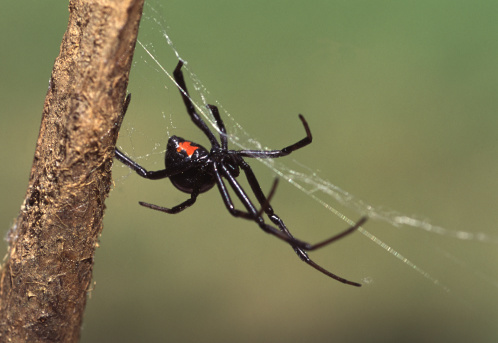The Black Widow Spider: A Notorious Predator of the Arachnid World
The black widow spider is a well-known and feared species of spider found throughout the world. Its distinctive appearance, venomous bite, and reputation as a deadly predator have made it a subject of fascination and fear for humans for centuries.
Appearance
The black widow spider is named for its black exoskeleton and distinctive red hourglass-shaped marking on its underside. Females are larger than males, with a body length of up to 1.5 inches. The males are much smaller and typically have a more mottled appearance. Both sexes have eight legs and are classified as arachnids.
Behavior
Black widow spiders are known for their venomous bite, which they use to immobilize their prey. They are shy and reclusive spiders that prefer to avoid humans and other large animals. They build webs in quiet, secluded areas such as woodpiles, sheds, and garages, where they wait for prey to become trapped in their sticky webs.
Diet
Black widow spiders are predators that feed primarily on insects such as flies, mosquitoes, and grasshoppers. They use their webs to capture their prey, and their venomous bite immobilizes and kills it.
Habitat and Range
Black widow spiders are found throughout the world, with different species inhabiting different regions. In the United States, they are most commonly found in the southern and western states. They prefer warm, dry environments and are often found in places such as woodpiles, sheds, and garages.
Venom and Health Concerns
The venom of the black widow spider is a neurotoxin that can be harmful to humans. The bite of a black widow spider can cause symptoms such as muscle pain, cramps, and spasms, as well as other more serious symptoms such as difficulty breathing and increased blood pressure. However, bites from black widow spiders are relatively rare, and deaths from their venom are even rarer.
Conservation and Protection
Black widow spiders are not considered endangered or threatened, but they are often misunderstood and persecuted by humans. It is important to educate the public about the benefits of these spiders in controlling insect populations and to take steps to protect them and their habitats.
Conclusion
The black widow spider is a notorious predator of the arachnid world, known for its venomous bite and distinctive appearance. While it can be harmful to humans, it plays an important role in controlling insect populations and is an important member of many ecosystems. It is important to respect and protect these spiders and to take steps to reduce the risk of human encounters with them.


Comments
Post a Comment